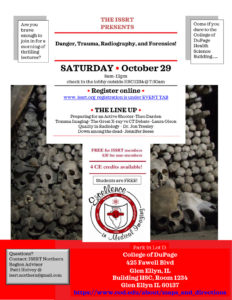
Dear Colleague:
The Medicare Access to Radiology Care Act of 2021 was introduced on June 1 by Representative Mike Doyle of Pennsylvania as H.R. 3657. This bill proposes a law that amends Medicare policy, allowing radiology practices and facilities to receive complete reimbursement for diagnostic imaging procedures performed by RAs, regardless of the setting in which the procedure is performed.
In late 2018, Medicare amended its payment policy to adjust the radiologist supervision levels for radiologist assistants. The ASRT, ARRT, ACR and SRPE are now advocating for the adoption of new statutory language in Medicare to ensure that regardless of the setting in which the radiology service is performed; hospital, critical access hospital, ambulatory surgical center or any other facility setting, that services provided by a radiologist assistant receive complete Medicare reimbursement. By not separating radiologist assistant reimbursement policies into different payment categories by service location, the adoption of MARCA would enable radiologists to devote more focused time to reviewing and interpreting complex medical images or urgent cases, thus increasing patients’ access to care. RAs will be able to work more efficiently, and Medicare patients will receive care from qualified RAs regardless of the facility in which their procedure takes place.
RAs have completed advanced education and clinical competencies and can expertly and safely perform radiologic assessments and certain procedures that traditionally were performed only by radiologists. Without complete Medicare reimbursement for RAs services made to the radiology practices employing RAs, the profession is in peril. As a direct result of Medicare’s current policy, RAs are losing their jobs and are unable to practice to the full extent of their capabilities. Medicare patients are not receiving the full benefit of care provided by a qualified and experienced radiology professional.
All radiologic technologists can help by going to the ASRT’s Advocacy Action Center to learn more about the MARCA bill and send a message to your congressional representative. R.T.s can also monitor activity on the bills and follow up with federal lawmakers regularly.
Sincerely,
Mike Odgren, B.S., R.P.A., R.R.A., R.T.(R)(CT)
President



 US News & World Report’s latest Best Jobs rankings has Radiologic Technologists ranked #15 in Best Healthcare Support Jobs and ranked #75 overall among the top 100 jobs.
US News & World Report’s latest Best Jobs rankings has Radiologic Technologists ranked #15 in Best Healthcare Support Jobs and ranked #75 overall among the top 100 jobs.